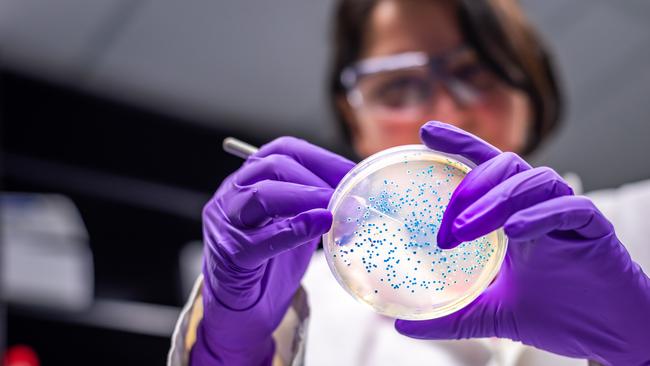The ‘silent global pandemic’ that will undermine healthcare systems and food safety
If the danger of drug-resistant superbugs is not addressed there could be a return to the medical dark ages, where a superficial scratch could be life-threatening.

What the heck is antimicrobial resistance, and why should we care about it?
How’s this for a scary answer?
It is a “silent global pandemic that will undermine healthcare systems and food safety supply and result in millions of deaths.”
If the danger of drug-resistant superbugs is not addressed there could be a “return to the medical dark ages, where a superficial scratch could be life-threatening and the procedures and treatments we now rely on are considered too risky to perform due to the risk of untreatable infection.”
This is not the plot of a B-grade sci-fi movie, but the sober analysis of the Australian Medical Association in its report Antimicrobial resistance: the silent global pandemic, calling out one of the world’s most significant public health threats about which too many Australians remain in the dark.
Antimicrobial resistance occurs when bacteria stop an antibiotic working effectively, meaning some infections may not be able to be treated, becoming superbugs. The more antimicrobials are used the more likely the microorganism will develop resistance.
The AMA report says human, animal and environmental health are all on the line unless health systems internationally start treating the issue of resistance to antibiotics, antivirals and antifungals more urgently.
“Over the coming decades (antimicrobial resistance is) predicted to become one of the leading causes of death with an estimated 50 million deaths each year by 2050,” AMA president Danielle McMullen said.
“It’s estimated that by 2050 the annual impact of antimicrobial resistance on the Australian economy will be between $142bn and $283bn.”
There has been an overall drop in antimicrobial use in recent years, the Australian Commission on Safety and Quality in Healthcare reported last year, down from 26.6 million prescriptions in 2017 to 21.8 million in 2022, though the Covid distancing rules and resultant falls in respiratory infection may have been in part responsible.
But the numbers were still high, with one in three Australians having at least one antibiotic dispensed in that year, the commission’s fifth Antimicrobial Use and Resistance in Australia report found.
“Australia continues to have one of the highest antimicrobial community prescribing rates in the developed world,” the commission said.
“We rank seventh highest compared with European countries, the United Kingdom and Canada in our use of antimicrobials in the community.
“Australian hospital antimicrobial use is estimated to be nearly three times that of the European country with the lowest use, the Netherlands,” it said.
“Encouragingly, since 2019 Australia’s antimicrobial use in the community has fallen 18 per cent overall, with a significant 25 per cent decline in 2020 and 2021, but a recent 10 per cent uptick in 2022.”
The AMA is calling for a coordinated national response to superbugs and antimicrobial resistance.
With the Albanese government having committed to a new Centre for Disease Control in Australia, it should be an immediate priority, Dr McMullen said.

“The federal government should work with the scientific and medical research community to combat superbugs through the new Australian CDC, which will provide scientific leadership and coordination of disease and health threats,” she said.
But the government should also be considering the risks involved in expanding the right to prescribe antibiotics, which the AMA says has the potential to lead to inappropriate use leading to more superbugs becoming drug resistant.
“Antibiotics are an important part of medicine, but it is absolutely critical they are prescribed carefully and responsibly,” Dr McMullen said.
Australia has had a national antimicrobial resistance strategy in place since 2015, the AMA report notes, and while it has done well in surveillance of antimicrobial use and resistance, and in infection prevention and control in human healthcare settings and the animal sector, Australians continue to be relatively unaware of the issue, and what’s at stake.

It pointed to recent studies showing one in five parents had reported giving their child antibiotics without a prescription. And 92 per cent of Australian adults don’t know the difference between a viral and a bacterial infection, with one in five thinking antibiotics can treat a common cold.
“This lack of awareness leads to inappropriate use of antimicrobials by patients, such as patients retaining unused antibiotics or prescriptions for future self-medicating, the report says.
The report suggests driving better understanding of the risks of antimicrobial resistance through schools, “particularly as many children understand the risks of infectious diseases due to the Covid-19 pandemic.”





To join the conversation, please log in. Don't have an account? Register
Join the conversation, you are commenting as Logout